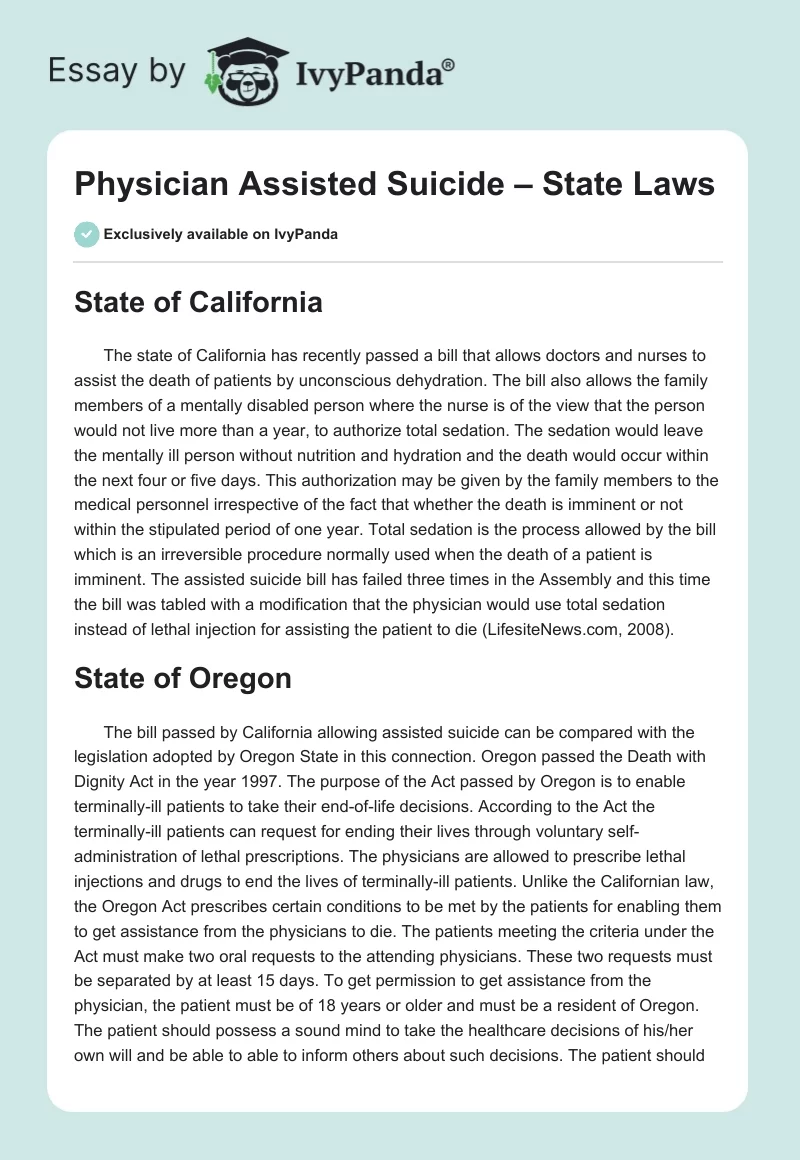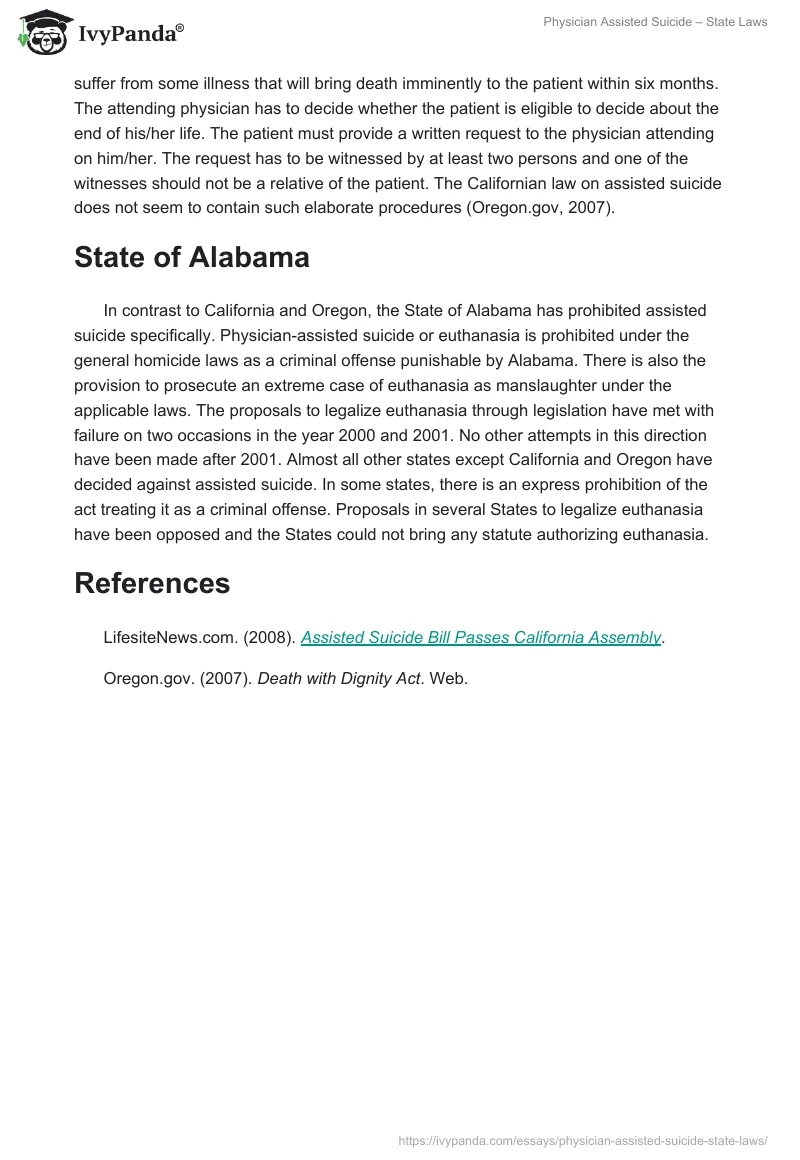State of California
The state of California has recently passed a bill that allows doctors and nurses to assist the death of patients by unconscious dehydration. The bill also allows the family members of a mentally disabled person where the nurse is of the view that the person would not live more than a year, to authorize total sedation. The sedation would leave the mentally ill person without nutrition and hydration and the death would occur within the next four or five days. This authorization may be given by the family members to the medical personnel irrespective of the fact that whether the death is imminent or not within the stipulated period of one year. Total sedation is the process allowed by the bill which is an irreversible procedure normally used when the death of a patient is imminent. The assisted suicide bill has failed three times in the Assembly and this time the bill was tabled with a modification that the physician would use total sedation instead of lethal injection for assisting the patient to die (LifesiteNews.com, 2008).
State of Oregon
The bill passed by California allowing assisted suicide can be compared with the legislation adopted by Oregon State in this connection. Oregon passed the Death with Dignity Act in the year 1997. The purpose of the Act passed by Oregon is to enable terminally-ill patients to take their end-of-life decisions. According to the Act the terminally-ill patients can request for ending their lives through voluntary self-administration of lethal prescriptions. The physicians are allowed to prescribe lethal injections and drugs to end the lives of terminally-ill patients. Unlike the Californian law, the Oregon Act prescribes certain conditions to be met by the patients for enabling them to get assistance from the physicians to die. The patients meeting the criteria under the Act must make two oral requests to the attending physicians. These two requests must be separated by at least 15 days. To get permission to get assistance from the physician, the patient must be of 18 years or older and must be a resident of Oregon. The patient should possess a sound mind to take the healthcare decisions of his/her own will and be able to able to inform others about such decisions. The patient should suffer from some illness that will bring death imminently to the patient within six months. The attending physician has to decide whether the patient is eligible to decide about the end of his/her life. The patient must provide a written request to the physician attending on him/her. The request has to be witnessed by at least two persons and one of the witnesses should not be a relative of the patient. The Californian law on assisted suicide does not seem to contain such elaborate procedures (Oregon.gov, 2007).
State of Alabama
In contrast to California and Oregon, the State of Alabama has prohibited assisted suicide specifically. Physician-assisted suicide or euthanasia is prohibited under the general homicide laws as a criminal offense punishable by Alabama. There is also the provision to prosecute an extreme case of euthanasia as manslaughter under the applicable laws. The proposals to legalize euthanasia through legislation have met with failure on two occasions in the year 2000 and 2001. No other attempts in this direction have been made after 2001. Almost all other states except California and Oregon have decided against assisted suicide. In some states, there is an express prohibition of the act treating it as a criminal offense. Proposals in several States to legalize euthanasia have been opposed and the States could not bring any statute authorizing euthanasia.
References
LifesiteNews.com. (2008). Assisted Suicide Bill Passes California Assembly.
Oregon.gov. (2007). Death with Dignity Act. Web.


